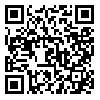Sun, Jun 29, 2025
[Archive]
Volume 39, Issue 1 (1-2025)
Med J Islam Repub Iran 2025 |
Back to browse issues page
Download citation:
BibTeX | RIS | EndNote | Medlars | ProCite | Reference Manager | RefWorks
Send citation to:



BibTeX | RIS | EndNote | Medlars | ProCite | Reference Manager | RefWorks
Send citation to:
Behmanesh A, Shams R, Soleimanpour S, Fazeli M A, Hosseinzadeh Davarzani M. Internet of Things in Medical Education: A Systematic Mapping Review. Med J Islam Repub Iran 2025; 39 (1) :288-300
URL: http://mjiri.iums.ac.ir/article-1-9479-en.html
URL: http://mjiri.iums.ac.ir/article-1-9479-en.html
Ali Behmanesh 

 , Roshanak Shams
, Roshanak Shams 

 , Samira Soleimanpour
, Samira Soleimanpour 

 , Mohammad Ali Fazeli
, Mohammad Ali Fazeli 

 , Mohammad Hosseinzadeh Davarzani
, Mohammad Hosseinzadeh Davarzani 




 , Roshanak Shams
, Roshanak Shams 

 , Samira Soleimanpour
, Samira Soleimanpour 

 , Mohammad Ali Fazeli
, Mohammad Ali Fazeli 

 , Mohammad Hosseinzadeh Davarzani
, Mohammad Hosseinzadeh Davarzani 


Education Development Center, Iran University of Medical Sciences, Tehran, Iran , drmhosseinzadeh@yahoo.com
Abstract: (426 Views)
Background: The Internet of Things (IoT) has introduced new possibilities for revolutionizing medical education and training. This study aimed to conduct a systematic mapping review of existing research to identify and map current advancements in IoT in medical education. The study sought to address key research questions regarding trends and activities in IoT development within this field.
Methods: The systematic mapping review explored the intersection of IoT and medical education by systematically collecting, categorizing, and synthesizing relevant studies. We conducted a keyword search in major online scientific databases, and 285 papers were initially retrieved from IEEE, PubMed, Scopus, and Web of Science. After removing duplicates, 204 unique papers were identified. A 2-stage selection process based on predefined criteria narrowed this down to 28 eligible papers. Data extraction from these studies highlighted trends in research development and geographical distribution.
Results: The analysis revealed that most publications on IoT systems in medical education were peer-reviewed journal papers (79%), with conference proceedings making up 21%. Thirteen countries contributed to the research, with the United States leading. The studies included pilot projects, laboratory experiments, and feasibility studies. IoT devices and sensors were applied in various areas, such as curriculum development, clinical skills training, patient simulation, telemedicine, and distance learning. While general medicine saw the most IoT applications, other medical disciplines also utilized these technologies.
Conclusion: Our findings have shed light on the transformative potential of wearable technology and IoT applications in enhancing educational outcomes and practices. The versatility of IoT devices and sensors across multiple domains within medical education highlights their capacity to revolutionize teaching, learning, research, and clinical practice. Our findings catalyze medical education leaders and policymakers to delve deeper into the possibilities offered by IoT, ultimately leading to improved educational experiences and outcomes.
Methods: The systematic mapping review explored the intersection of IoT and medical education by systematically collecting, categorizing, and synthesizing relevant studies. We conducted a keyword search in major online scientific databases, and 285 papers were initially retrieved from IEEE, PubMed, Scopus, and Web of Science. After removing duplicates, 204 unique papers were identified. A 2-stage selection process based on predefined criteria narrowed this down to 28 eligible papers. Data extraction from these studies highlighted trends in research development and geographical distribution.
Results: The analysis revealed that most publications on IoT systems in medical education were peer-reviewed journal papers (79%), with conference proceedings making up 21%. Thirteen countries contributed to the research, with the United States leading. The studies included pilot projects, laboratory experiments, and feasibility studies. IoT devices and sensors were applied in various areas, such as curriculum development, clinical skills training, patient simulation, telemedicine, and distance learning. While general medicine saw the most IoT applications, other medical disciplines also utilized these technologies.
Conclusion: Our findings have shed light on the transformative potential of wearable technology and IoT applications in enhancing educational outcomes and practices. The versatility of IoT devices and sensors across multiple domains within medical education highlights their capacity to revolutionize teaching, learning, research, and clinical practice. Our findings catalyze medical education leaders and policymakers to delve deeper into the possibilities offered by IoT, ultimately leading to improved educational experiences and outcomes.
Type of Study: Review Article |
Subject:
Medical Education
Send email to the article author
| Rights and permissions | |
 |
This work is licensed under a Creative Commons Attribution-NonCommercial 4.0 International License. |





